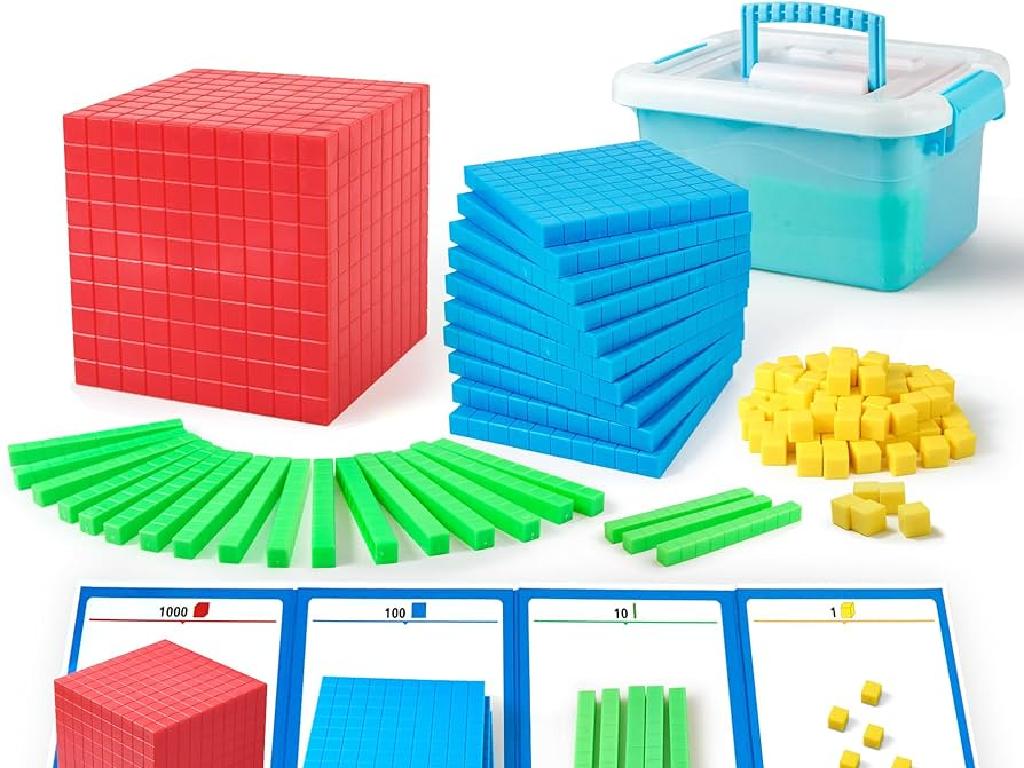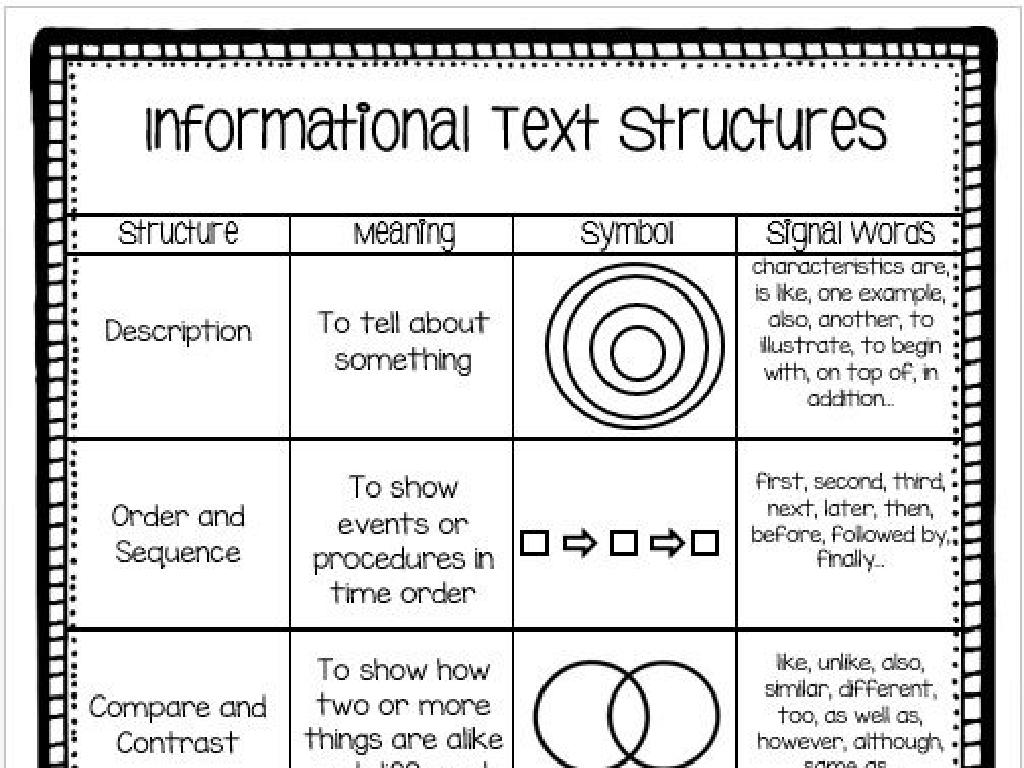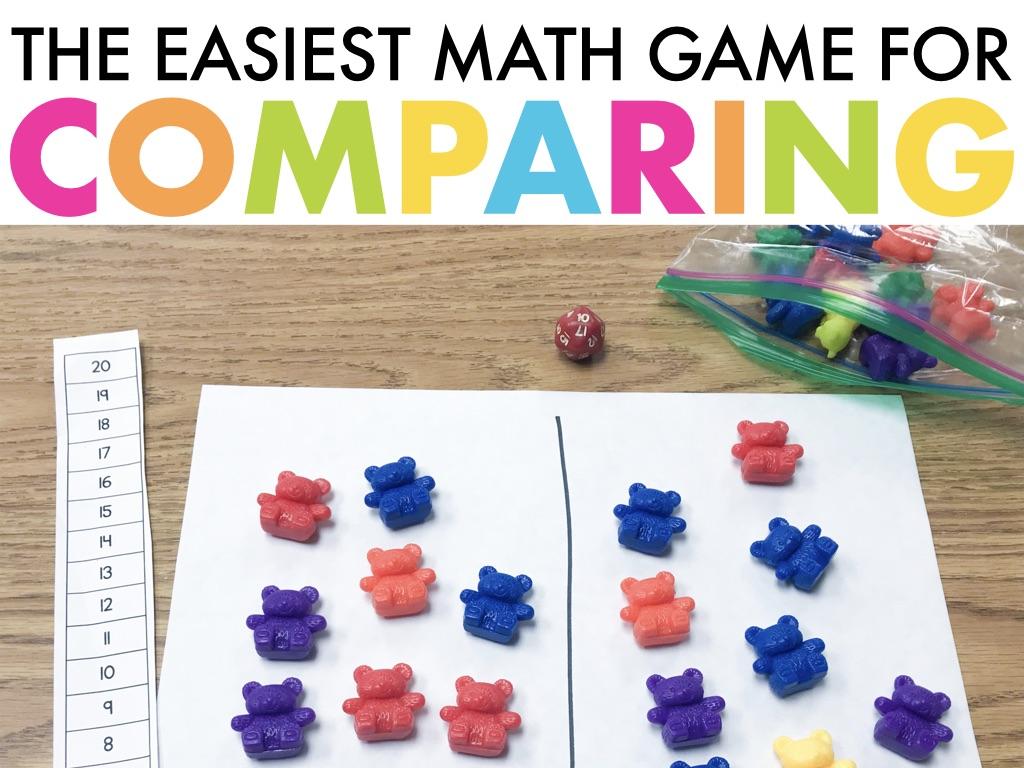Subtract Two-Digit Numbers - With Regrouping
Subject: Math
Grade: Second grade
Topic: Subtraction: Two Digits
Please LOG IN to download the presentation. Access is available to registered users only.
View More Content
Welcome to Subtraction!
– Learn to subtract two-digit numbers
– Taking one number from another
– Like 53 – 29, think of it as taking 29 apples from 53 apples
– Fun examples to understand
– We might use toys or candies for easy understanding
– Practice subtraction together
– We’ll do group activities to practice regrouping
|
This slide introduces second graders to the concept of subtracting two-digit numbers with regrouping. Start by explaining the basic idea of subtraction as taking away one number from another. Use tangible examples that children can relate to, such as subtracting apples, to make the concept more concrete. Incorporate fun into learning by using items like toys or candies to demonstrate subtraction. Engage the class with group activities where they can practice regrouping, ensuring to explain the ‘borrowing’ concept clearly. The goal is to build a strong foundation in subtraction that will be crucial for their future math skills.
Understanding Subtraction with Regrouping
– Subtraction means taking away
– It shows how many are left
– Example: 5 apples – 2 eaten
– If you start with 5 and eat 2, you have 3 apples left (5 – 2 = 3)
– Regrouping in subtraction
– Sometimes you need to ‘borrow’ from the next column
|
This slide introduces the basic concept of subtraction as taking away and finding out how many items are left. Use the example of having 5 apples and eating 2 to illustrate this point, showing that 3 apples remain. Emphasize that subtraction helps us figure out the difference between two numbers. Introduce the concept of regrouping, which is necessary when the top number in a column is smaller than the bottom number. Explain that in such cases, we ‘borrow’ from the next column to the left. This will set the stage for more complex subtraction problems that the students will learn to solve.
Subtracting Two-Digit Numbers with Regrouping
– Start at the ones place
– Begin subtraction from the right side
– Align numbers by place value
– Ensure digits are in correct columns
– Subtract ones, then tens
– Take away the smaller from the larger digit
– Regroup if needed
– Borrow from the tens if ones are not enough
|
This slide introduces the concept of subtracting two-digit numbers with regrouping. Emphasize the importance of starting from the ones place and moving left to the tens. Make sure students understand how to line up numbers correctly by place value, as this is crucial for accurate subtraction. Demonstrate how to subtract the ones and if the top number is smaller, how to regroup by borrowing from the tens place. Use examples like 54 – 29, where you need to regroup to subtract 9 from 4 in the ones place. Practice with several examples and provide hands-on activities to reinforce the concept.
Understanding Regrouping in Subtraction
– ‘Borrowing’ in subtraction
– When a number in the ones place is too small, we borrow from the tens.
– Why regroup with smaller ones
– If the top number in the ones place is smaller, we need to regroup.
– Step-by-step regrouping
– We’ll learn each part of regrouping to subtract correctly.
|
This slide introduces the concept of regrouping, also known as borrowing, in subtraction. It’s crucial for students to understand that when the number in the ones place of the subtrahend (top number) is smaller than the ones in the minuend (bottom number), they need to ‘borrow’ from the tens place. This process allows them to subtract numbers correctly. The slide sets the foundation for a step-by-step guide on how to regroup. Teachers should prepare to demonstrate this concept with visual aids, such as base-ten blocks or number lines, and provide plenty of practice examples. Encourage students to ask questions if they’re confused and remind them that regrouping is a skill that gets easier with practice.
Let’s Try an Example: Subtracting with Regrouping
– Start with 64 – 29
– Regroup because 9 is more than 4
– We can’t take 9 from 4, so we need to regroup
– Borrow 1 ten to make 14 ones
– Take 1 ten from 6 tens, leaving 5 tens
– Now subtract: 5 tens and 14 ones
– Subtract the ones, then the tens
|
This slide provides a clear example of subtracting two-digit numbers with regrouping for second-grade students. Begin by showing the problem 64 – 29. Explain that since 9 is greater than 4, we cannot subtract 9 from 4 without regrouping. Demonstrate how to borrow 1 ten from the tens place, turning 6 tens into 5 tens, and adding the borrowed ten to the ones place, making 14 ones. Now, students can easily subtract 9 from 14, and then 2 from 5. Walk through each step on the board, and encourage students to follow along with their own paper and pencil. After the example, provide several similar problems for students to try on their own, ensuring they grasp the concept of regrouping.
Practice Time: Subtracting with Regrouping
– Solve 74 minus 38 step by step
– Take 8 from 4 in the ones place, we need to regroup
– Regroup when ones place is smaller
– Borrow 1 from the tens place, making it 6 tens and 14 ones
– Check work by adding the answer
– Add your answer to 38 to see if it equals 74
– Share your solution with the class
|
This slide is an interactive practice for students to understand the concept of regrouping in subtraction. Start by writing down the problem and guide the students through the steps of regrouping. Explain that since 4 is less than 8, we cannot subtract without borrowing from the tens place. After regrouping and finding the answer, instruct students to add the answer back to the smaller number (38) to check if the sum is the original number (74). This reinforces their understanding of subtraction and the concept of inverse operations. Encourage students to try this method with different numbers and share their solutions with the class for collaborative learning.
Activity: Subtraction Bingo
– Receive your Bingo card
– Solve the subtraction problems
– Use regrouping to subtract two-digit numbers
– Mark the correct answers
– Aim for five in a row to win
– Shout ‘Bingo!’ when you get five in a row
|
This interactive activity is designed to help second graders practice and reinforce their skills in subtracting two-digit numbers with regrouping. Each student will receive a Bingo card filled with subtraction problems. They must solve these problems and mark the answers on their cards. The first student to get five correct answers in a row (horizontally, vertically, or diagonally) should shout ‘Bingo!’ The teacher will then check the student’s answers to confirm they are correct. To prepare for this activity, ensure that the Bingo cards have a variety of problems with different levels of difficulty and that students understand the concept of regrouping. During the activity, circulate the room to assist any students who may be struggling. This game encourages quick thinking and accuracy in subtraction, making learning fun and engaging.
Mastering Subtraction with Regrouping
– Congratulations on learning regrouping!
– Practice at home to become a subtraction star
– Try more problems to sharpen your skills
– Get ready for bigger number subtraction
– We’ll explore subtracting larger numbers soon
– Keep up the great work!
|
This slide wraps up the lesson on subtracting two-digit numbers with regrouping. It’s important to praise the students for their hard work and encourage them to continue practicing at home to solidify their understanding. Emphasize the value of practice in mastering math skills. Give them a heads-up that the upcoming lessons will involve larger numbers, which will build on the foundation they’ve just learned. Provide some example problems for home practice and encourage students to help each other if they get stuck. Remind them that learning is a step-by-step process, and they’re doing great!






